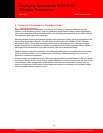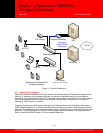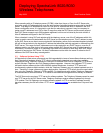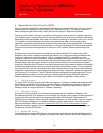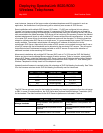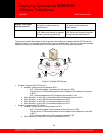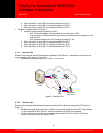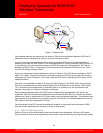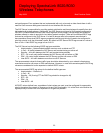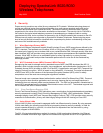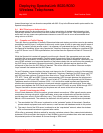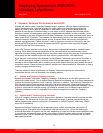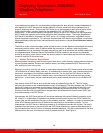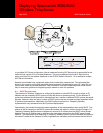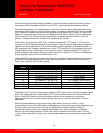
Deploying SpectraLink 8020/8030
Wireless Telephones
May 2009 Best Practices Guide
and performance. Even systems that are implemented with only voice and no data clients there is still a
need for QoS to ensure background services do not interfere with the audio.
The SVP Server is responsible for providing packet prioritization and timed release for specific time slot
deliveries to all wireless phones. Additionally, the SVP Server must have its QoS tagging configured to
use DSCP (Differentiated Services Code Point) tags that will be properly recognized by the wired and
wireless network in order to provide for low latency packet transport. There are six different DSCP tags
that can be configured in the SVP Server. It is best to always refer to the network manufacturer’s
documentation to see what DSCP tags are supported natively and which will need to be configured to
give high priority to all the of handset’s traffic. By default all SVP Server DSCP tags are set to a value of
zero or four. A valid DSCP tag range is from 0 to 63.
The SVP Server has the following DSCP tag types available:
Administration – Network administration services such as telnet and FTP
In Call – All traffic between the SVP Server and handset during an active call
Standby – All traffic between the SVP and handset during standby
RTP – All in-call audio traffic between the SVP Server and call server or PBX
PBX – All control traffic between the SVP Server and the call server or PBX
Inter-SVPII – All traffic between more than one SVP Servers
The recommended values for these traffic types should be determined by your network infrastructure
manufacturer and/or call server or PBX manufacturer. However, in most environments specific DSCP tag
values are considered to be the expected or default DSCP values.
The recommended DSCP tag values for the defined traffic types are:
Administration – Default or 0
In Call – 46
Standby – 26 (If using PTT the DSCP tag should be changed to 46)
RTP – 46
PBX – 24
Inter-SVPII – 46
All DSCP values defined here, regardless of what values are used, must be configured for appropriate
priority throughout the network to ensure end-to-end QoS functionality. It is critical that voice receive the
highest priority to ensure the user experience is as good as possible.
23
©2009 Polycom, Inc. All rights reserved.
Polycom and the Polycom logo are registered trademarks of Polycom, Inc. All other trademarks are the property of Polycom, Inc. or their respective companies.



